GHANA KICKSTARTS YEAR OF RETURN WITH DURBAR AT AKWAMUFIE
Activities celebrating the Full Circle Festival is drawing to a close as the Country ushers in the Year of Return, Ghana 2019. Officials of the Ministry of Tourism, Arts and Culture , Ghana Tourism Authority and office of Diaspora Affairs joined the Chiefs and people of Akwamu to celebrate several Hollywood stars of African descent at a colourful ceremony.
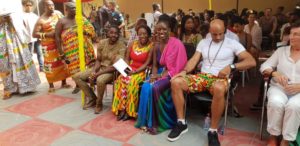
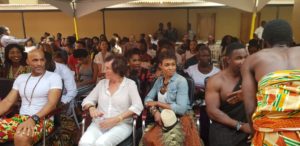
Drawing parallels between the resilience and fighting spirit of the Akwamu people, the Paramount Chief, Odeneho Kwafo Akoto III, congratulated the star studded entourage for their exploits in the USA which has now made them global icons. Actor Michael Jai White and Marketing icon, Bozoma Saint John were both enstooled as warriors. Hollywood Actor, Boris Kodjoe, who coordinated the trip also came up for special recognition for his untiring efforts in promoting Ghana to the rest of the World.


The Year of Return is a special spiritual and birthright journey being cordinated by the Ghana Tourism Authority to commemorate 400 years since the first enslaved Africans arrived in North America. The initiative has pushed Ghana into 4th place in the list of 19 must visit places in 2019 put together by CNN.


Inside Ghana’s Elmina Castle is a haunting reminder of its grim past
Source: Tanni Deb, CNN and Segun Akande, for CNN (CNN Africa)
Across Africa, from the north of the Sahara to the West African coast sit many relics of the continent’s early interactions with Europe.
‘A dark history’
See more stories from Inside Africa and share your thoughts with us on Facebook, Twitter and Instagram
CNN Travel lists Ghana as place to visit in 2019
In article by Barry Neild, published some few hour ago, CNN Travel recommended Ghana as one of 19 destinations for 2019 travellers. This comes at the back of a publication by Travel Lemming listing Ghana as one of the top 5 destinations to visit in Africa in 2019.
Singling out efforts marketing Ghana as a destination of choice for diasporans with the #yearofreturn
#Ghana2019 which has outlined programs commemorating 400 years since the first enslaved Africans arrived in North America as key reason. The writer highlights Ghana’s unique selling proposition with his.., “For all the sobriety of this anniversary, what also awaits visitors to Ghana is the warm, intoxicating embrace of country completely at ease with its identity rushing headlong towards a bright future”.
The key attraction for the visitor is the one place where walls built over centuries ago seem to speak to everyone including the Obama’s and Melania Trump and the several thousands who have visited the Cape Coast Castle.
Come and #SeeGhana #EatGhana #WearGhana and #FeelGhana #discoverghana #exploreghana
Barry Neild – Source: CNN Travel
2018 Culture Afrochella ‘wows’ patrons
What seemed to be the last major event on the tourism calendar for 2018 did not disappoint patrons. The 2018 Culture Afrochella dubbed #afrochella18 came off at the El-wak Sports Stadium on Saturday December 29, 2018 bringing traffic to a stand-still.
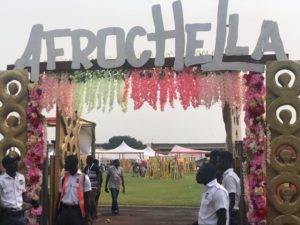
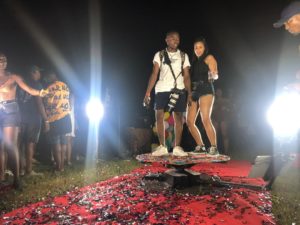
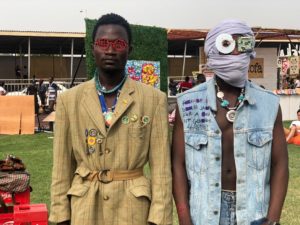
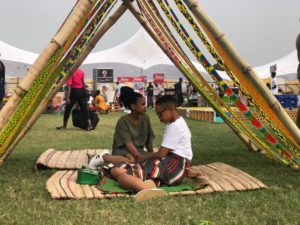
The beautifully and artistically designed entrance was just a foretaste of what was in-stock for patrons. From afrocentric dressing to woodcraft, acrobatic display to foot’pool’, eye-opening paintings to giant candies, the photo opportunities were endless but requiring phones with extra memory space for selfies.
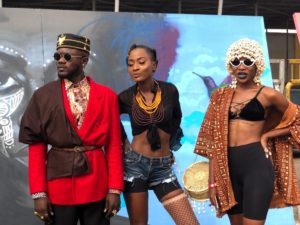
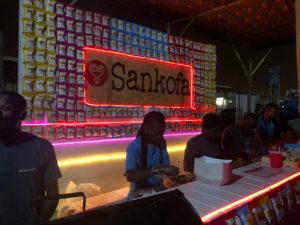
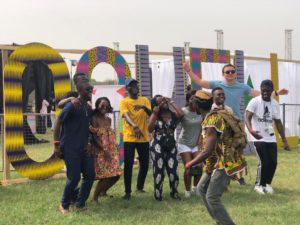
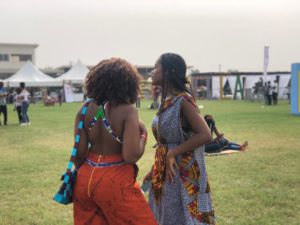
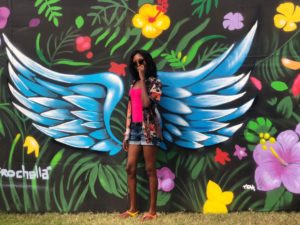
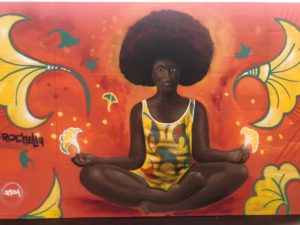
The music was just ‘afrocentrically’ riveting as the food caused taste buds to produce excess saliva. Crowning it all was the evening musical performances that left no room for parking for patrons who arrived late. Patrons are already looking forward to the 2019 edition and organizers have promised nothing but a more exciting event.
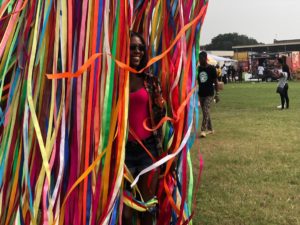
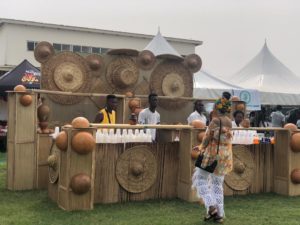
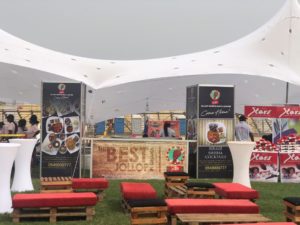
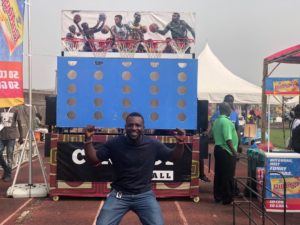
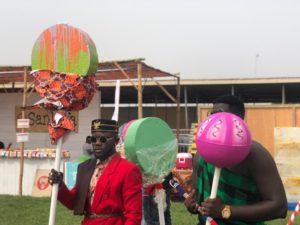
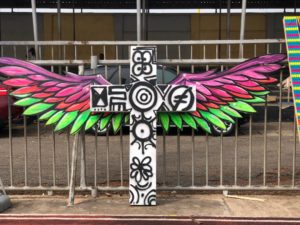
Colourful Bonwire Kente Festival Held
The Bonwire Kente Festival is an annual festival celebrated by the people of Bonwire in the Ashanti Region to mark the invention of kente.
The celebration, which drew a number of people, both residents and non-residents, to the durbar grounds, was on the theme: “Harnessing Kente Heritage, for Sustainable Economic Empowerment.”

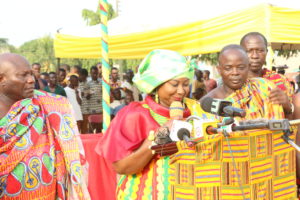
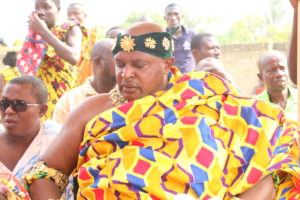
This year’s festival was held on the 8th December, 2018 at Bonwire Senior High School. Local and master weavers graced the occasion with varied colourful and brilliantly designed hand-woven Kente fabric.
Speaking at the grand durbar to mark the occasion, Mr. Akwasi Agyeman, CEO of Ghana Tourism Authority and also the chairman of the occasion in his address said that ‘Kente’ is a brand and symbol of the nation that everybody should be proud of and also make it a point to #Wear Ghana Kente. He further said, Kente is a national identification and has a lot to tell about history, tradition and culture of our nation.
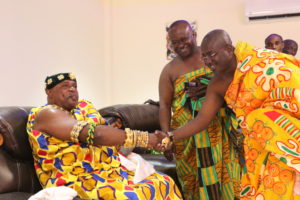
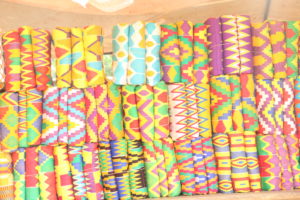

Hon. Kwabena Owusu Adnomi, MP for Ejisu Constituency and Deputy Minister for Roads and Highways also said the industry held enormous promise for the economy- job and wealth creation. He added that it could give impetus to the nation’s economic and tourism development. He also promised to help the youth who want to go into apprenticeship.
The formal broadcaster and host of ‘The Stand Point’ Gifty Anti was awarded for promoting and contributing towards the wearing of Kente. She said that, she will be the unofficial brand ambassador for Kente in the country to promote it.

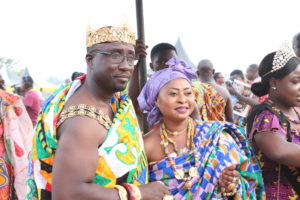
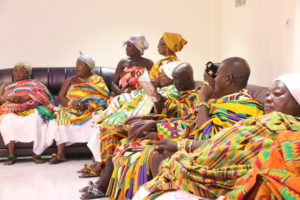
At the durbar grounds, greetings were exchanged between the chiefs and his subjects; the activities include cultural display, spoken word and exhibition of Kente.
GTA wins two awards at African Travel Times Magazine 2018 Awards
The African Travel Times Magazine Awards was instituted to recognise excellence in the travel and tourism/aviation sector in West Africa.
The Awards ceremony was held at the Accra City Hotel, Accra on the 13th December 2018, it was in recognition of the great zeal the Authority and its CEO have demonstrated in the promotion and reposition of tourism in Ghana and strengthening of collaboration with practitioners in the country and beyond.
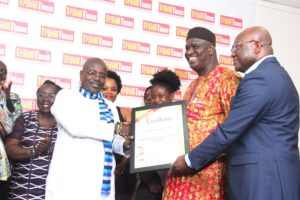
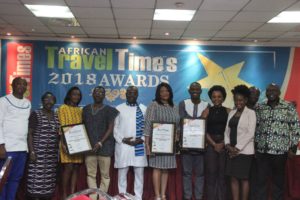
The Ghana Tourism Authority was adjudged the “Most Active Tourism Agency” in West Africa at the African Travel Times Magazine 2018 Awards. At the ceremony, the Chief Executive Officer of the Ghana Tourism Authority, Mr. Akwasi Agyeman won the “Most Active Head of National Tourism Agency” in West Africa. Minister of Tourism, Arts & Culture, Hon. Catherine Afeku also received the “ Most Active Tourism Minister Award”.

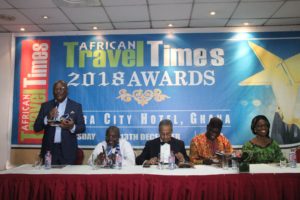
2018 Ghanaian Christmas version of “12 Days of Christmas” goes viral
A Ghanaian Band Kwan Pa Band, has released what is turning out to be the 2018 Christmas carol which has already gone viral on various social media platforms. Kwan Pa Band gave viewers the hilarious version of the the popular “12 Days of Christmas” carol at Joy Prime TV Studio. This has been described as typical #feelghana moment.
Watch and enjoy below…
The lyrics to the “Palm Wine Music” version of the popular carol is as follows:
LYRICS:
On the FIRST DAY of Christmas my true love gave to me, A PARTRIDGE IN A PEAR TREE!
On the SECOND DAY of Christmas my true love gave to me…, PAYA NE ANWAMO … , and a partridge in a pear tree!
On the THIRD DAY of Christmas my true love gave to me…, FANTA NE NKATIE… , Paya ne anwamo, and a partridge in a pear tree!
On the FOURTH DAY of Christmas my true love gave to me…, K)T) NE ABENKWAN, Fanta ne nkatie, Paya ne Anwamo, and a partridge in a pear tree!
On the FIFTH DAY of Christmas my true love gave to me… KONTOMIRE, KYINGOM (chewing gum) NE ALEWA, NKATIE, NE K)K)) A YATOTO, and a partridge in a pear tree!
BRONYAAAAAA….! ????
Below is an extract on unique Ghanaian music by Prof. J.K. Anquandah.
Ghana is par excellence a nation of music. Every sphere of Ghanaian life-style throbs with music.
At the naming ceremony and the puberty rite, at the betrothal and the wedding, at the market and on the farms, at the blacksmith’s and the potter’s factory and at the beach fishing scene, at the village story-telling scene at night, at the chief’s durbar and the annual Yam Festival, at the traditional priest’s shrine or in the Christian church, at the social gathering or in the nightclub, music-making is ubiquitous.
Ghana’s contemporary musical world is characterized by an array of indigenous and foreign music types, employing local and foreign styles, techniques and instruments. There are ancient traditional instruments some dating back to 500-1000 years, such as the Seperewa, Adenkum, Dawuro, Akasa and the Ashiwa, the Nnawa, Odurugya and Atenteben
And there are foreign instruments such as guitars, trumpets, organs, pianos, saxophones and clarinets which have been introduced recently into the country. Today, the very imagination boggles at the fantastic array of music varieties produced by Ghanaian dance bands, choral groups, church musical groups, traditional recreational groups, funeral groups and royal music groups.
During the last half century, Ghana’s creative composers have sought to identify the country’s unique qualities of indigenous music and develop them. One such quality involves the technique known to musicologists as “contrapuntal.”
In such a musical type, each drum plays its own part and yet all the drums combine to form one unit, there is also a voice interplay of solo and chorus, with one calling and the other responding.
Ephraim Amu, Ghana’s celebrated composer, in experimenting on the contrapuntal concept, married Western type of harmony to traditional Ghanaian rhythm and produced at least a dozen musical compositions which world musical critics have adjudged as master pieces.
These include Adawurabome, Meda Preko, Nkradi, Alegbegbe, Yaanom ebibirima, Momma yenkoso nfro, Tete wobikyere, Konakatutuw, Miva miva, and Bonwere Kente.
This article examines some of the rich traditional sources which Ghanaian music-makers have tapped in order to make such an important contribution to the world’s musical heritage.
Ghanaian traditional music can be grouped into two major families, first, music for entertainment or recreation, and second, institutional music performed as part of social, religious, cultural or royal political functions or celebrations. Recreational or entertainment music seems to have the greatest variety of musical types employing varied instruments and also, quite, naturally, has the most popular types of music.
Source: National Commission on Culture
Promoting Domestic Tourism: The Responsibility of Every Ghanaian
The fortunes of Ghana’s tourism has for a long time been hinged on the magnanimity of foreign tourists and visitors. While this phenomenon may not be bad considering that the country needs foreign cash, it is imperative we shift focus on scaling up numbers in the domestic tourism sector.
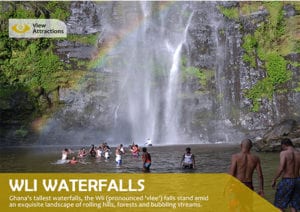
The need to grow this aspect of our tourism requires that citizens develop a keen interest in patronizing our tourists’ sites. It is a well-known fact that Ghana is blessed with some of the most incredible sites in the world. With many of these attractions in their natural state, lovers of nature and eco-tourists will find the country the best to be for some real tourism adventure.
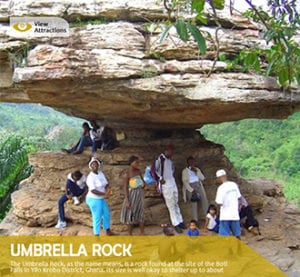
Ghana’s spectacular and scenic tourist attractions, hospitable people, and delicious food add to the grandiosity of an industry which is fast becoming one of the foremost pillars of the economy. But while statistics have shown over the years that foreign tourists and visitors have helped to boost the sector, there are equal indications that citizens can help to put tourism in Ghana on a much higher pedestal.
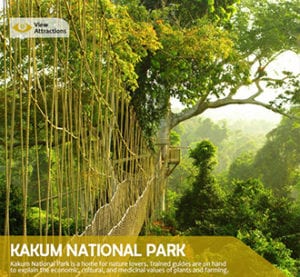
The need to shore up the domestic tourist numbers stems from the fact that evidence exists all over the world and particularly, in some African countries that the industry is rife with the prospect of transforming livelihoods through employment and wealth creation. There are strong indications that the potential tourism wields in transforming economies and empowering livelihoods is maximized through a vibrant domestic tourism sector.

Countries that have embarked on the promotion of local tourism are still reaping the benefits and have been able to transform whole communities into tourists’ sites while increasing local participation.
In South Africa for instance, domestic tourism has become an important source of revenue and employment, recording about 17.2 million domestic tourists last year ++with cruise and rural tourism as focus growth areas. World-class sites have been established to commemorate the country’s past and celebrate its new found unity, while the number and quality of community, village tours have grown dramatically.

While the Ghanaian scenario may be far from this narrative, evidence abounds to the possibility of having a more vibrant and effective domestic tourism sector which can significantly improve the living conditions of those engaged in it. Ghana has a vast and aesthetic collection of monuments in forts and castles, reverential sites and a lot more which have become a constant reminder of our historic role in the activities of the Transatlantic Slave Trade era. These sites can be harnessed to reflect the example South Africa presents.
It is significant to note that the promotion of domestic tourism is a shared responsibility that requires the concerted efforts of all stakeholders-policy makers, private sector, traditional authorities and local citizens.
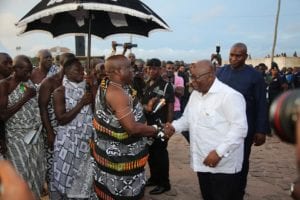
Individually, a change in perspective towards the patronage of tourists’ sites could go a long way to give the industry the needed facelift. While people may be inclined to visit some of these sites only during holidays, a change in perspective could make it a routine exercise which in turn could bring in more foreigners to the sites. So instead one of waiting to organize a group of people to Kakum Park on Farmers’ Day for example, they could go there on weekends instead. I have tried to explain my own observation of the kind of synergy that exists between Ghanaians and our tourism, yet I couldn’t have used a better example to illustrate that relationship than one of which I was part. In an era where new media and advanced technology is making it possible to practically do everything and anything, we should be able to use the tools of technology to drive tourism numbers domestically. Social media in particular, presents us with a fine opportunity for this to be done.

A unique element of tourism in Ghana is the fact that it is one of the few sectors of the economy which put direct money into the hands of those engaged in it, which implies that an increase in the number of visitations ultimately improves the financial situation of stakeholders.
As a country famously known for her peace and political stability, Ghana has proven to the world we can be trusted when it comes to safety of tourists and that should be leveraged on by local citizens by helping drum home this phenomenon to prospective foreign visitors and tourists.
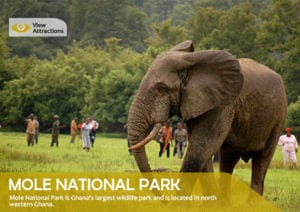
One way to stimulate interest in tourism will be to create tourism clubs and environmental protection societies in schools. More and more of the youth in Ghana must be involved in tourism; only then can they develop the strong desire to be a part of its success stories in the future. Additionally, annual leave from workers should be made compulsory to make sure that workers get time to visit tourist sites. Perhaps there should be a policy that workers who do not take their leave automatically forfeit their leave allowance.
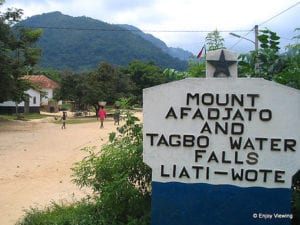
Ghanaians need to be made aware of the significance of domestic tourism and its impact on the Ghanaian economy. It is worthy of commendation that initiatives continue to spring up in the domestic tourism drive, notably; Ghana Tourism Authority’s, See Eat Wear Feel Ghana, Citi FM’s Heritage Caravan, Wango Wango, among others. While it is extremely commendable that such initiatives are helping to open up tourist sites to Ghanaians, there is still more that can be done to rouse the enthusiasm and the desire to patronize these sites. While we recognize the effort of government in trying to shore up interest among citizens to embark on domestic tourism trips, we urge it to create the enabling environment for local investments and businesses to thrive within the sector.
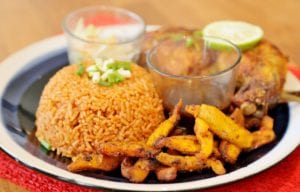
Tourism has an enormous potential to develop the country but this huge potential is easily overlooked. And until each Ghanaian is prepared to tap into this huge prospect, we will continue to rely on the magnanimity of foreigners to develop a sector which has the potential of creating wealth through massive employment for local citizens.
Writer:- Samuel Obeng Appah, Content Editor – VoyagesAfriq Media Limited
Twitter @ObengAppah
GTA launches Ada As Tourism Enclave
ADA AS A TOURISM ENCLAVE
The Ghana Tourism Authority in partnership with the Ada East District Assembly have together launched a project aimed at promoting Ada Foah area as a tourism enclave. This was done at a ceremony organized at Ada Foah yesterday.
Amongst the numerous tourism potentials of Ada include spots for marine watching, the Ada (Lake Volta) Estuary, the vibrant Asafotufiam Festival of the Chiefs and People of the Ada Traditional Area as well as beachfront and waterfront facilities for tourism.
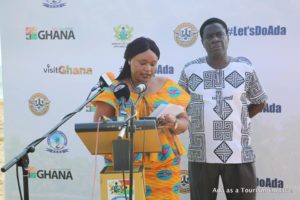

The estuary also offers the best conditions for water sports like sailing, canoeing, fishing, water skiing, wake boarding and jet skiing.
Another important water body and one of the most important salt mining areas in the country is the Songhor Lagoon which also serves as a base for birdwatchers.


It is in this regard that the Ghana Tourism Authority, the Chiefs of Ada and the District Chief Executive had series of meetings to work on a blue print of inventory of all tourism sites, potential sites, policy imperatives for the Assembly and also the immense potential of tourism in the Ada East Area
.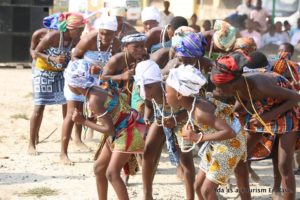

A working team co-chaired by the District Chief Executive, Sarah Pobee and CEO of GTA, Akwasi Agyeman including representatives of the chiefs, project partners and GTA Tema office was inaugurated by GTA Board Chairperson, Madam Ahwiring.
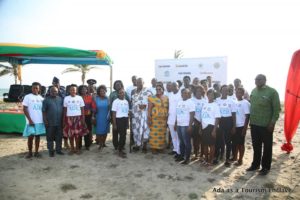
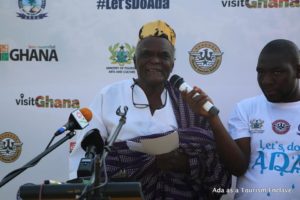
The plan is expected to open up the place for development with allocation of land by the chiefs.
Wechiau Adventures 4
This is the final episode of Kofi Akpabli’s Wechiau Adventures
I strolled past the main mosque and descended to the Wechiau market. By now the mid day sun was at its shinning best. Wechiau market occurs every sixth day. My tour began with a quick fix for lunch. I had fish caught fresh from the Volta fried in front of me. I sorted the treat with koosey fried in sizzling shea butter.
The interesting thing about Wechiau market is that for certain items there is the Lobi section and Wala section. With the koosey, for instance, there is the lineup of women preparing the Lobi one and directly facing them another line of women frying the Wala brand.
All the better for the customer, I thought. I simply helped myself to balls of the two varieties. Also, when I wanted pito to wash down my meal, I took care to respect the balance. A refreshing calabash of Wala pito went down first. Then I got up, wiped my lips and then went in for an equally satisfying calabash of Lobi beer. You may think this is a drinking spree but I disagree. I call it ‘‘cashing up the local economy’’.
Agbai, my tour guide had by now excused himself and handed me over to a connoisseur of the local brew. His excuse was reasonable. Being a Muslim, he would rather be excused from the drinking session. The poor, young man has suffered enough ‘‘haram’’ at my hands, having already watched me swallow akpeteshie.
It was thus on a full belly that I got mixed up in the crowd at Wechiau market, rubbing shoulders with traders, shoppers, goats and sheep. The main shopping area is made up of thatch roofed sheds supported by wooden poles. Items sold comprise charcoal, cook ware and second hand clothing. There is a big complex for stores. In front of this structure is the fufu base which is quite a sight.
Unlike the plantain and cassava affair that pertains in southern Ghana, fufu in these parts is strictly a yam business. The mortars for the process are giant ones with some standing as tall as chest level. It is real macho women who do the pounding. Five or six of them stand round the huge mortar each with pestle in hand. In rhythm, and with much energy, the pounders keep hitting till the fufu is done. There are about five of such stations in the market area. Can you imagine the fufu sound splash when all stations are pounding at the same time?
From the fufu base I strolled to the forex bureau section. If you are thinking dollars and CFA’s think again. In Wechiau society, cowries are as good as money. And the demand for them is very much alive. In a number of customary transactions, cowries are mandatory. Among friends and families, the exchange rate is a hundred cowries to ten thousand old Ghana cedis and vice versa. But the commercial rate is higher. Since the redenomination, the cowry system has also duly complied. One hundred cowries are now equal to One Ghana cedi, with the value being the same.
At the market, the day’s rate was 120 cowries for One Ghana cedi. And if it is 100 cowries that you want, you must pay One Ghana cedi twenty pesewas. Call this the bank rate. A bearded, middle aged man who knew not a word of English sat, legs outstretched with cowries spread on a mat. In my mind, I called him the Chancellor of the Exchequer. Guess what? The Chancellor was also selling cola nuts. When I appeared before him all he wanted to know was if I wanted cedis or cowries.
My last port of call was the chief’s palace. Having made an appointment, I arrived in the company of Agbai. One imposing structure in Wechiau town is the palace. Not surprisingly, there are hippo paintings on the outside wall. The palace is built in the form of the ancient Larabanga Mosque. But the inside is all modern.
The Wechiau-Naa, Imoru Nandon Gomah II was in the courtyard with three of his elders.
Naa is proud that the transformation of Wechiau is happening under his traditional leadership. He believes his forefathers would also be happy. He said that in the past, their people showed great strength by hunting down and eating the hippo. In those days anyone who killed a hippo was a hero and presented the hind legs to the chief’s palace. According to the paramount chief, today, such an act would be a taboo. ‘‘My forebears might have been braver, but because I protect the hippopotamus, I have seen things that they have not seen’’, he added.
Having finally brought my trip to an end, my next action was to jump on the next available bus to Wa, rest my exhausted body for the night and then connect to Accra the next dawn. As for Agbai and his crew, I don’t think I can thank them enough.
In many respects, my adventure to Wechiau has been fulfilling; the river safari, the encounter with the hippos, the interactions and all the new things learnt. But more than any of these, it was one simple phrase that kept coming back to me. It meant much more to me than I can ever explain. This was a statement made by Wechiau-Naa during our chat: ‘‘every stranger’s visit makes us feel important’’
I left Wechiau with those words ringing in my head.
Author: Kofi Akpabli (A travel writer)
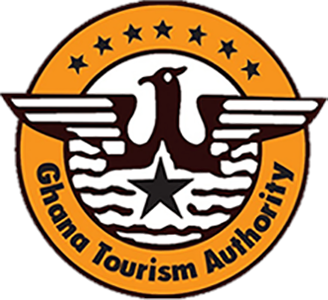

 Call Center
Call Center
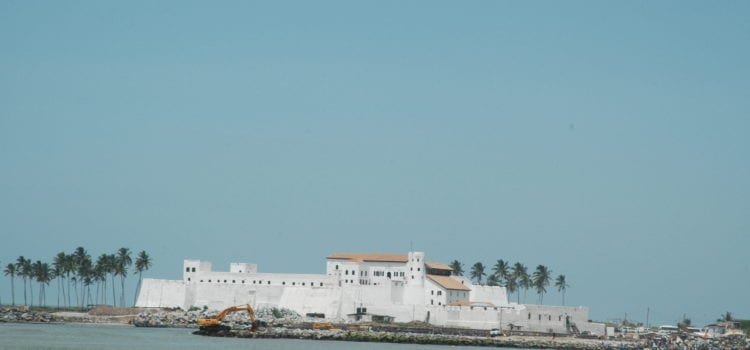


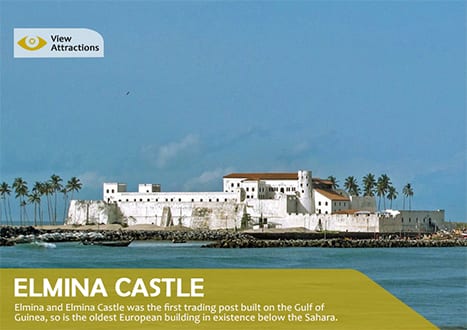
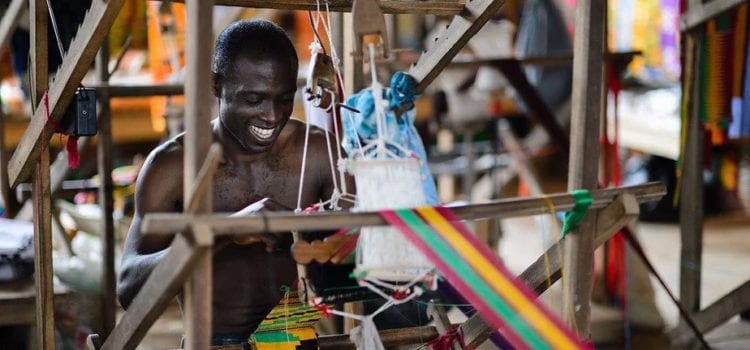
 Call Center: 0307007100
Call Center: 0307007100